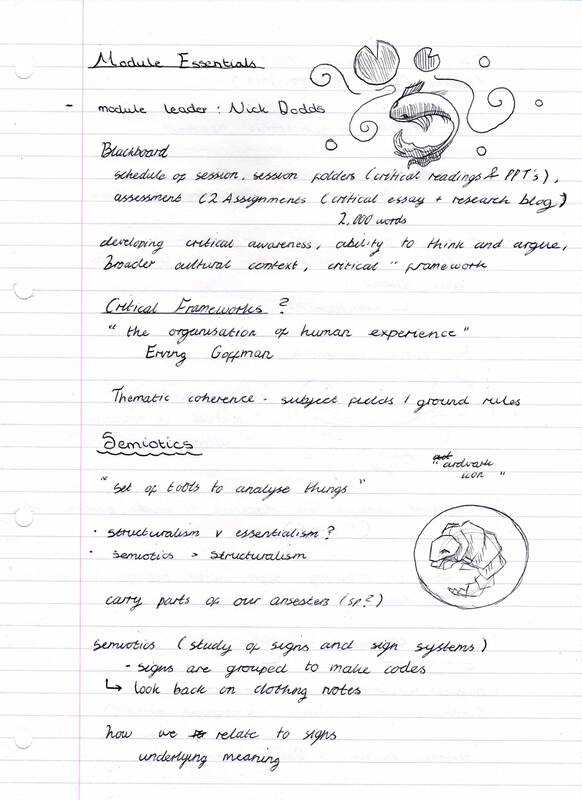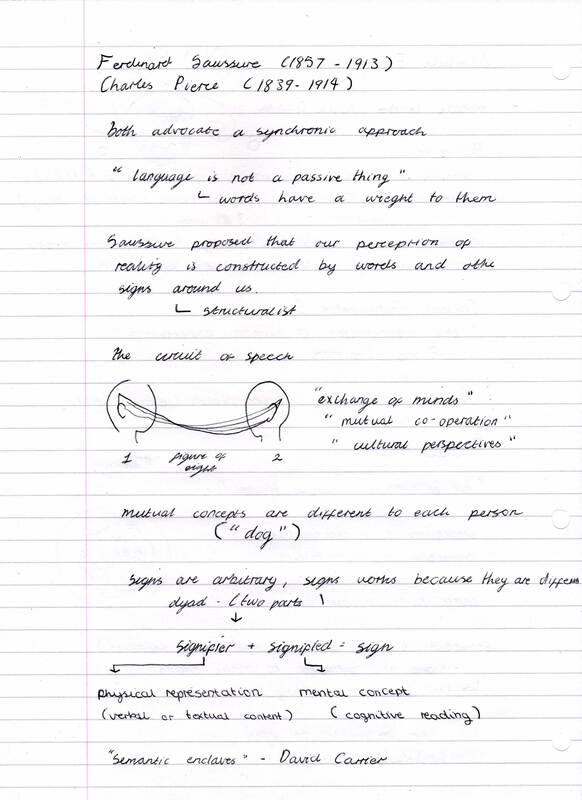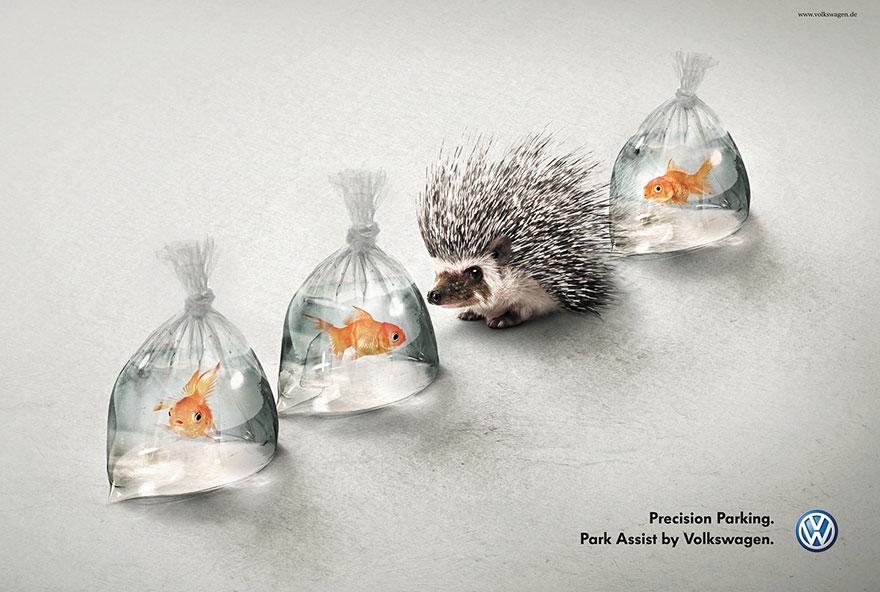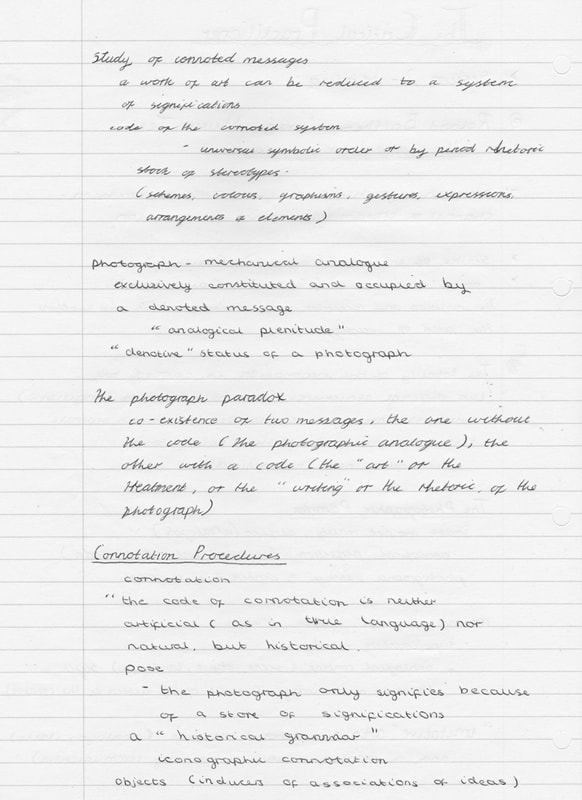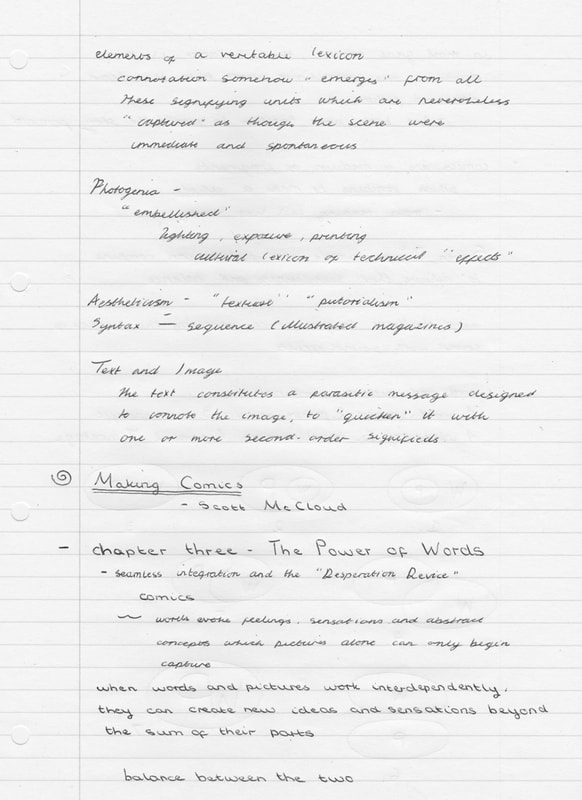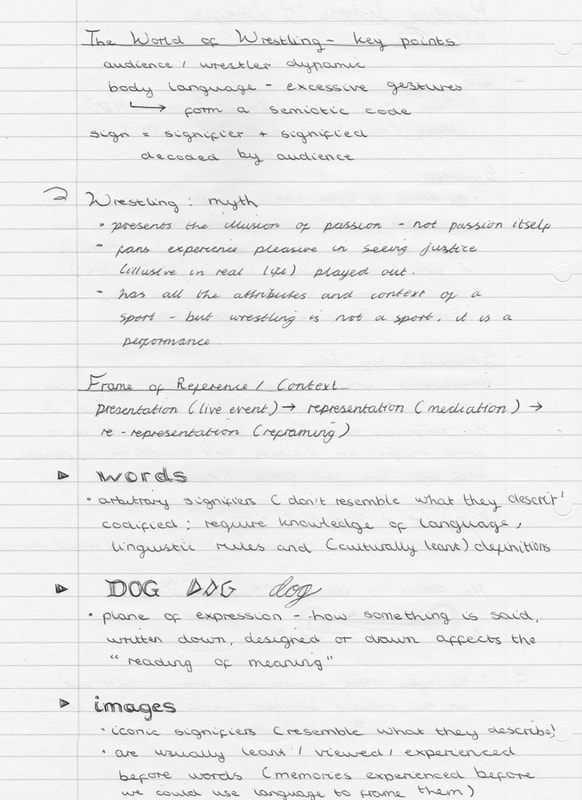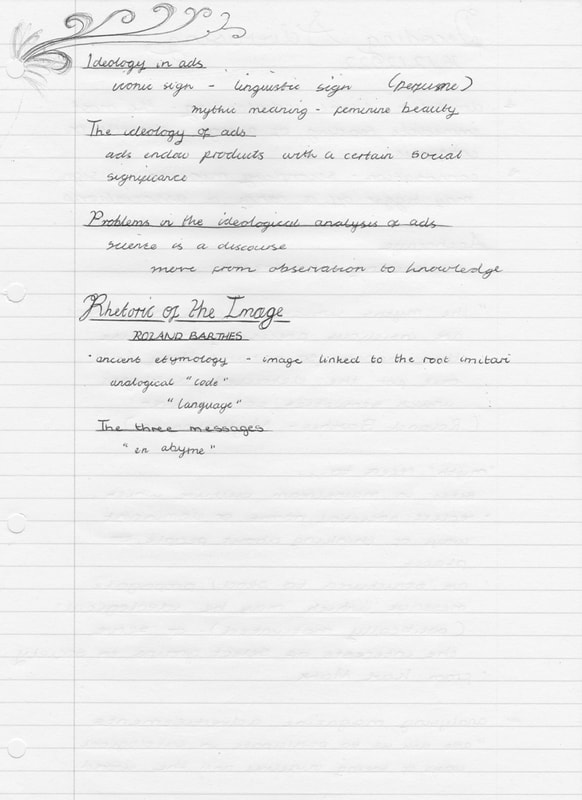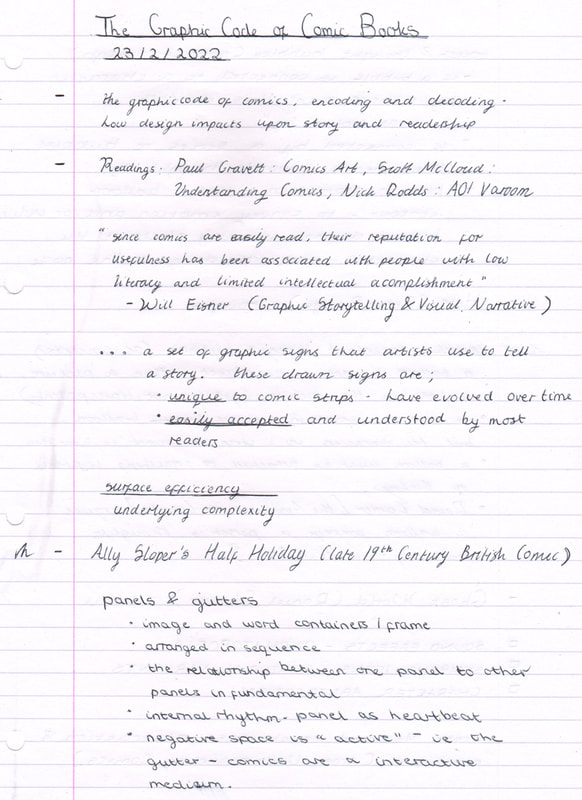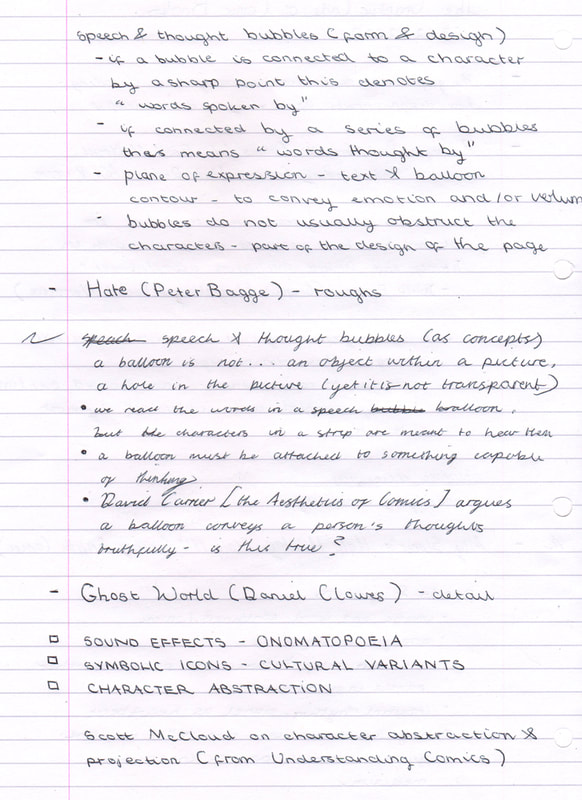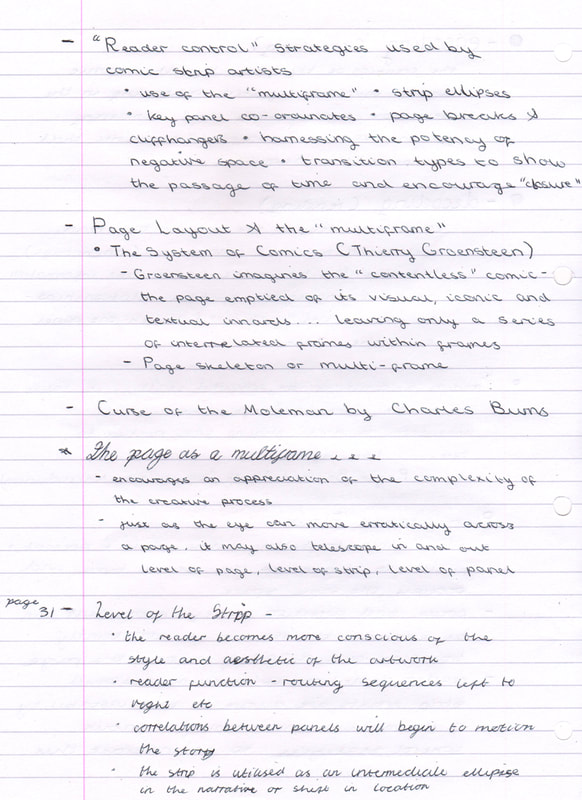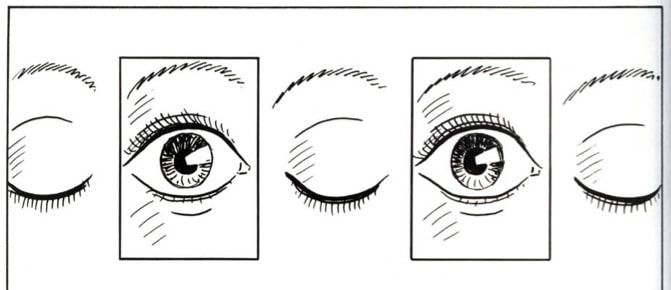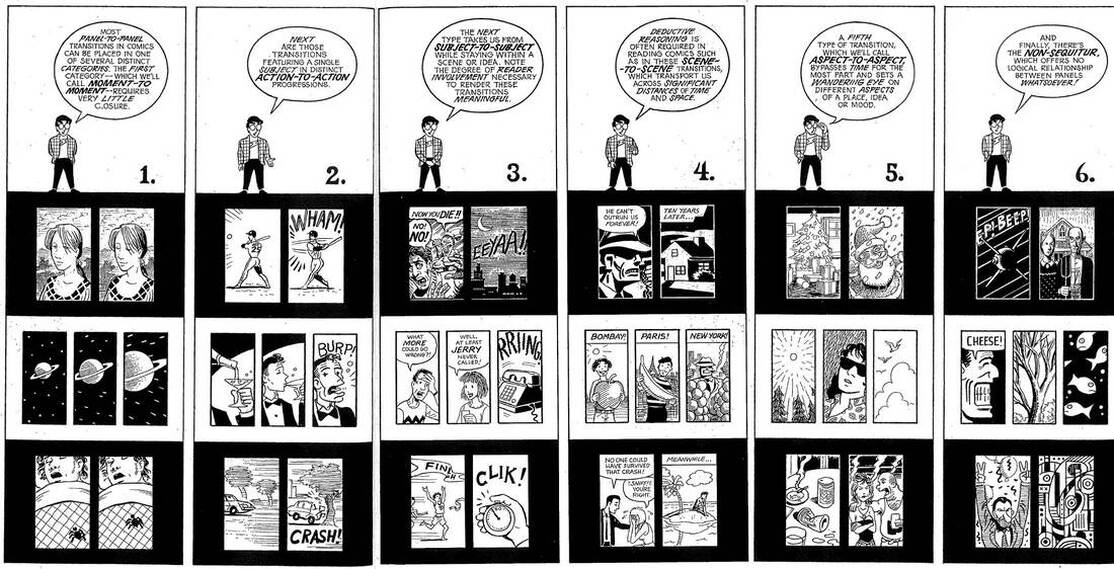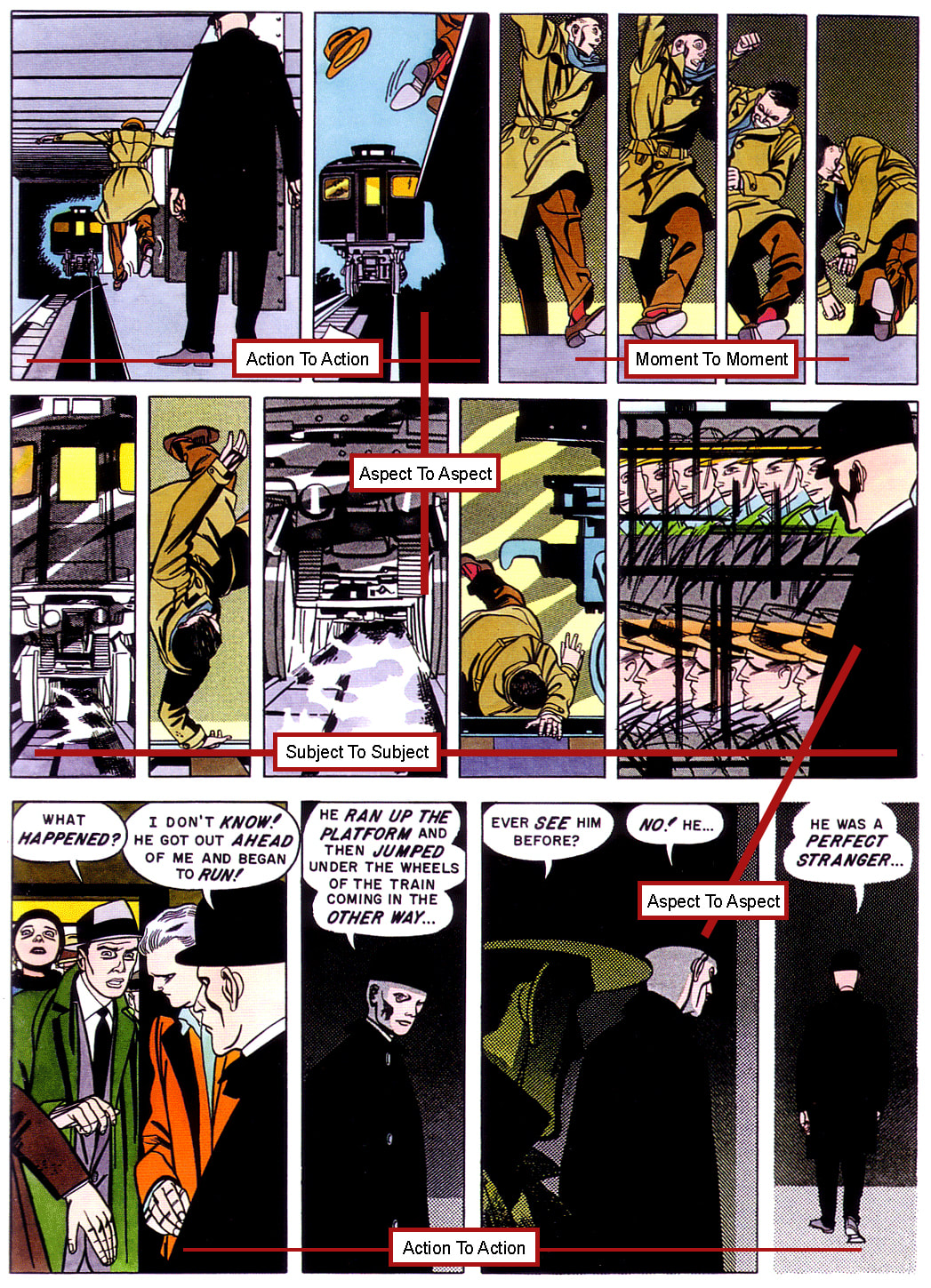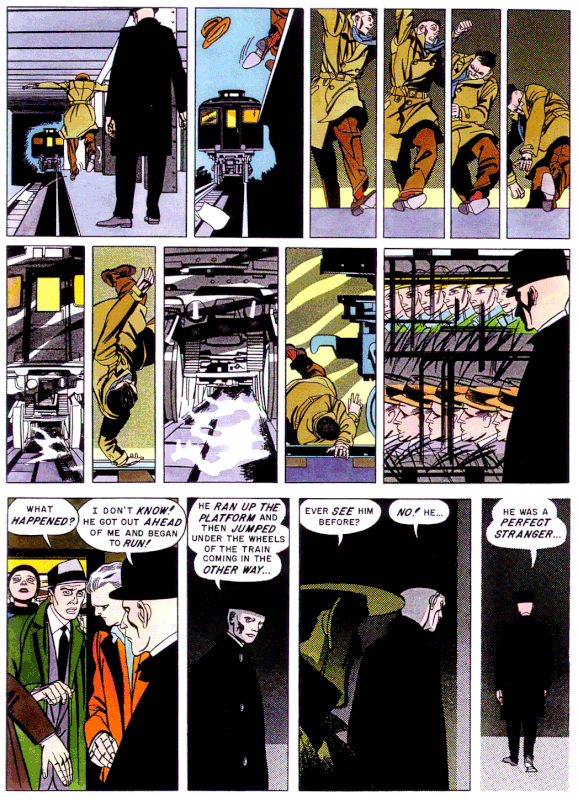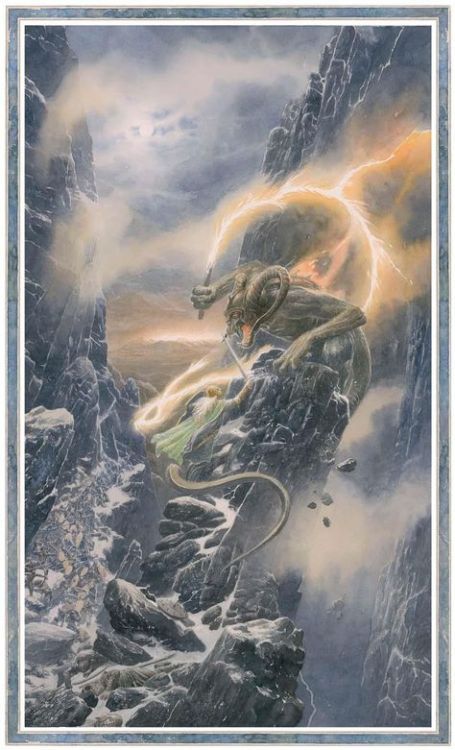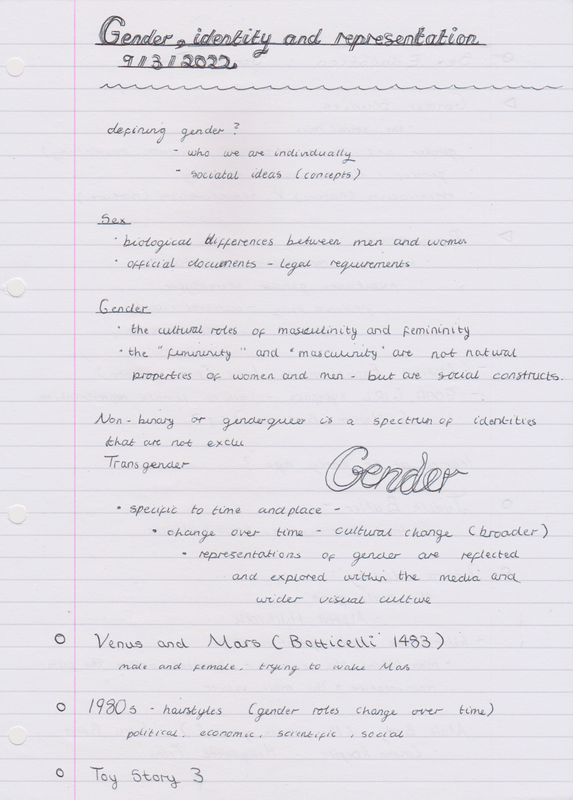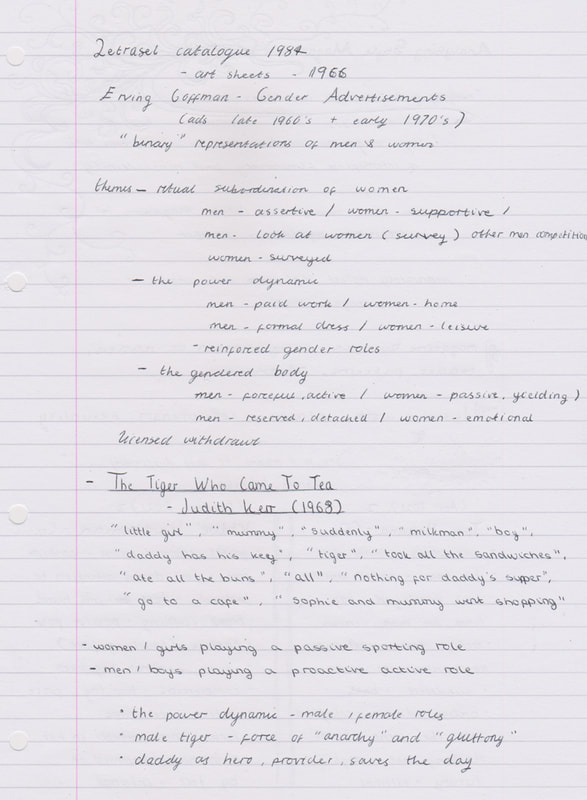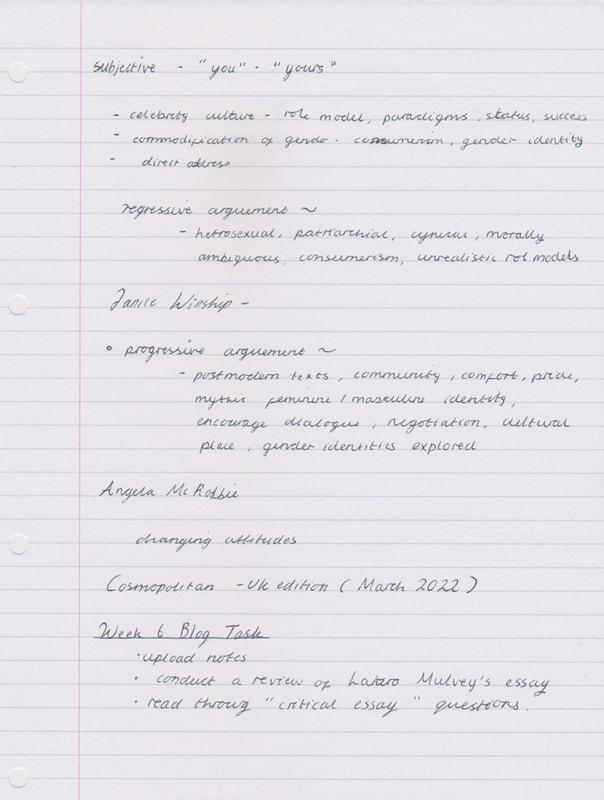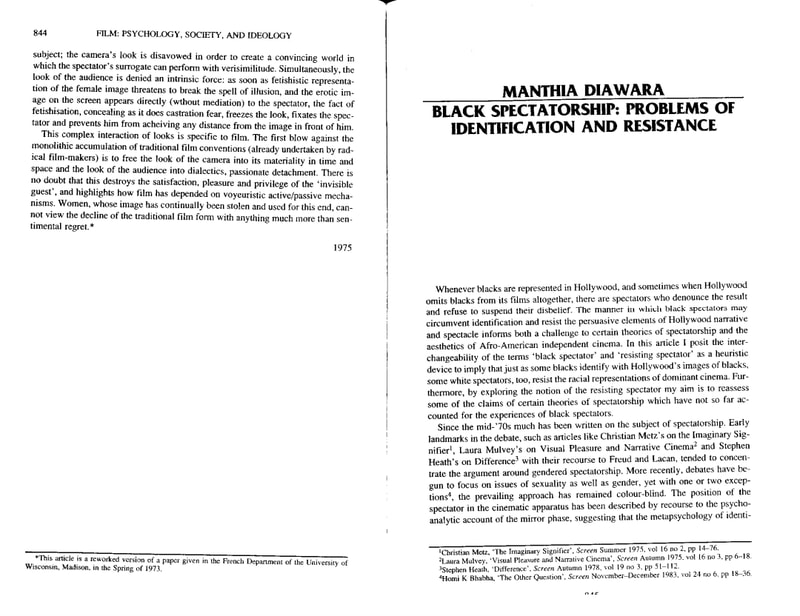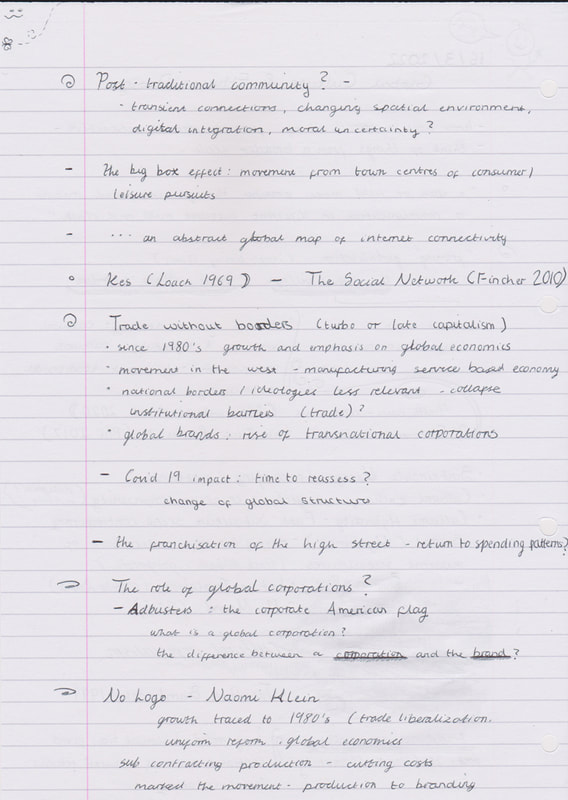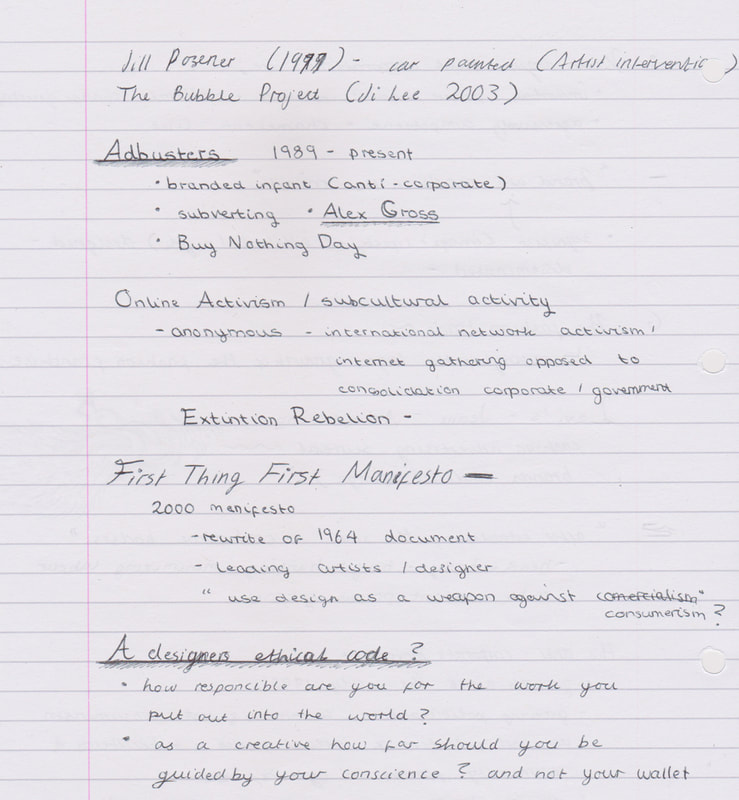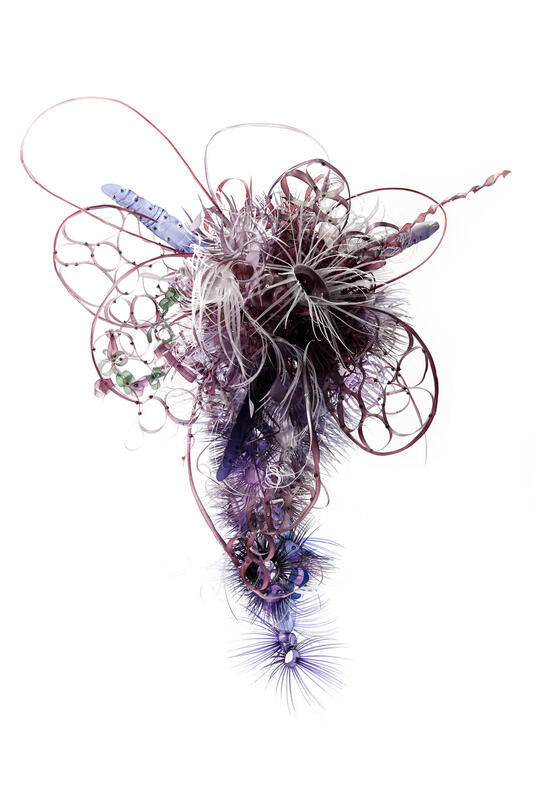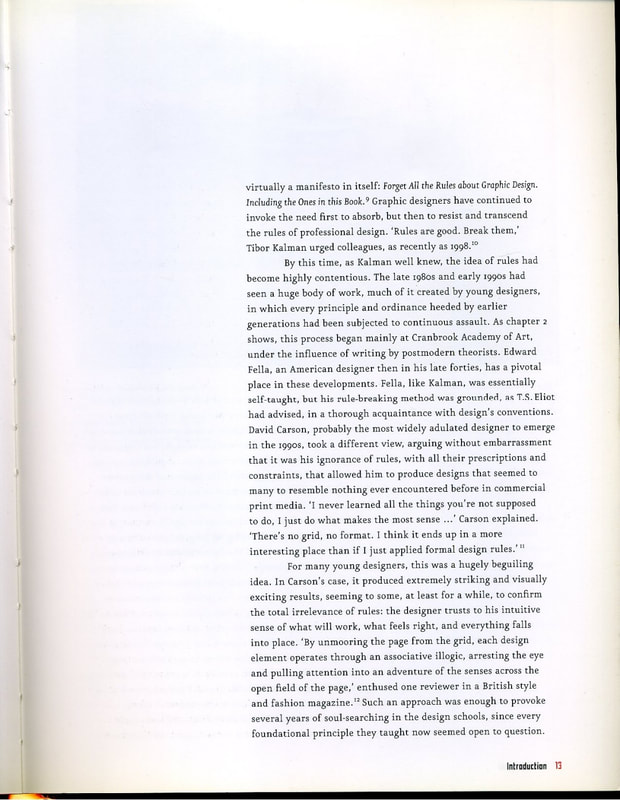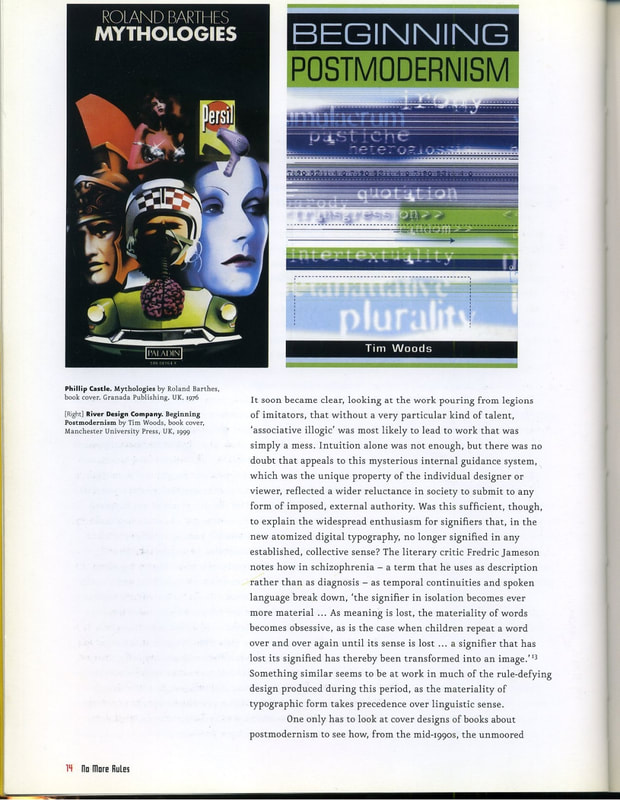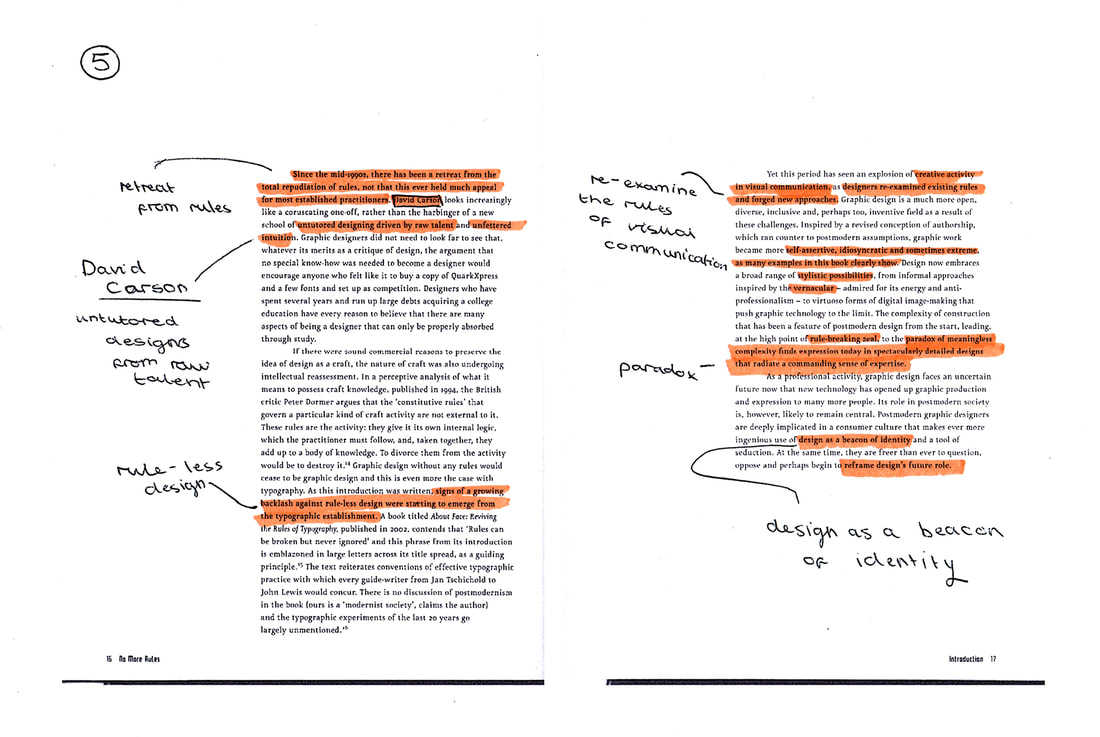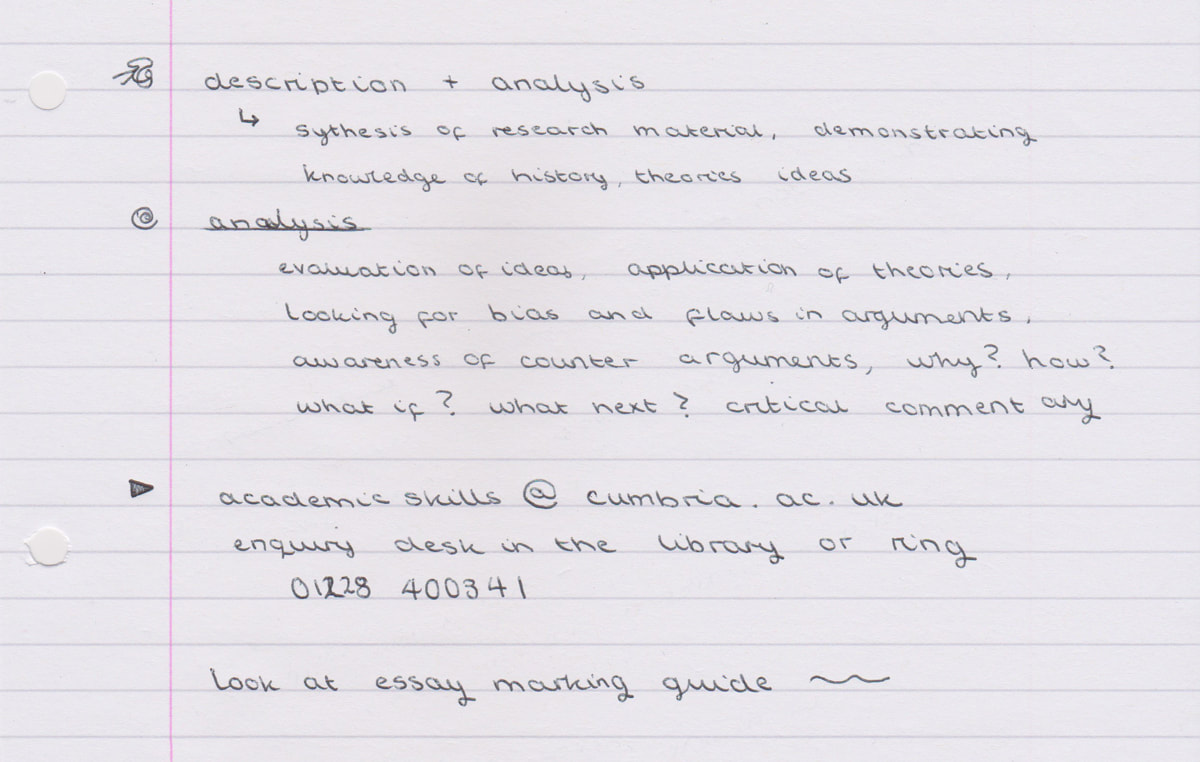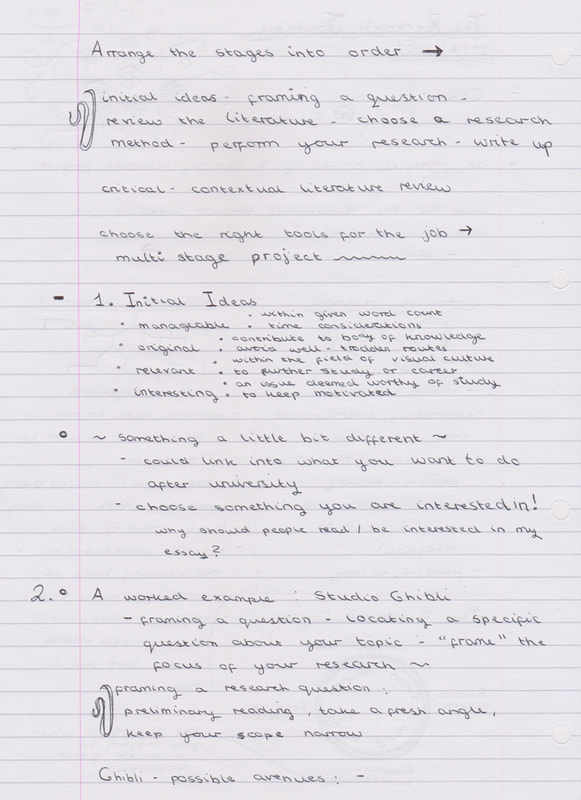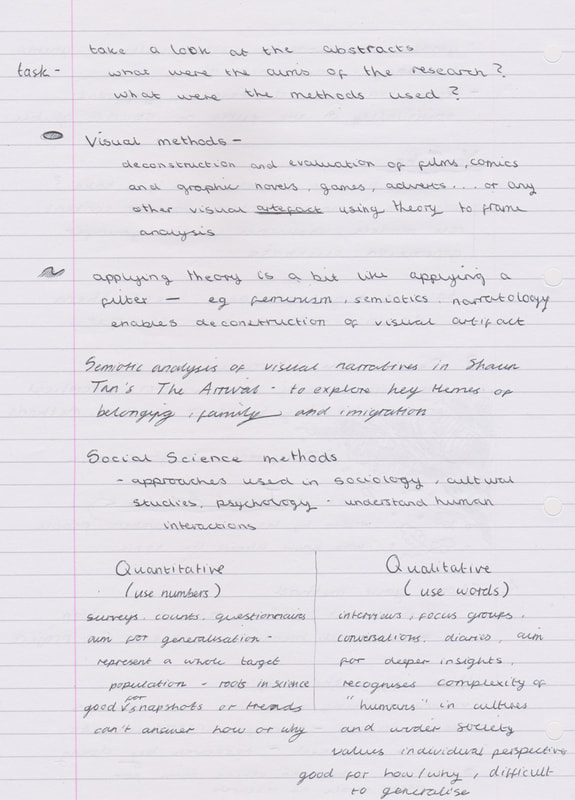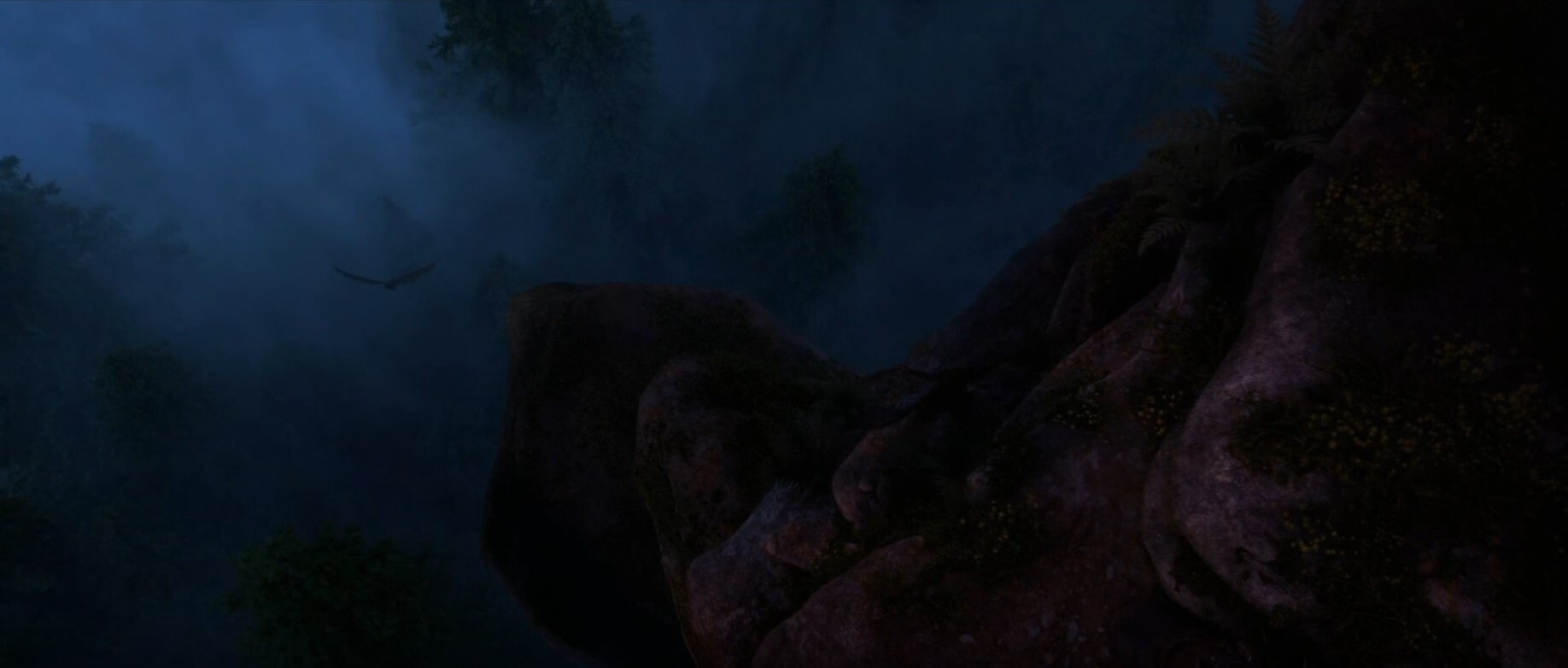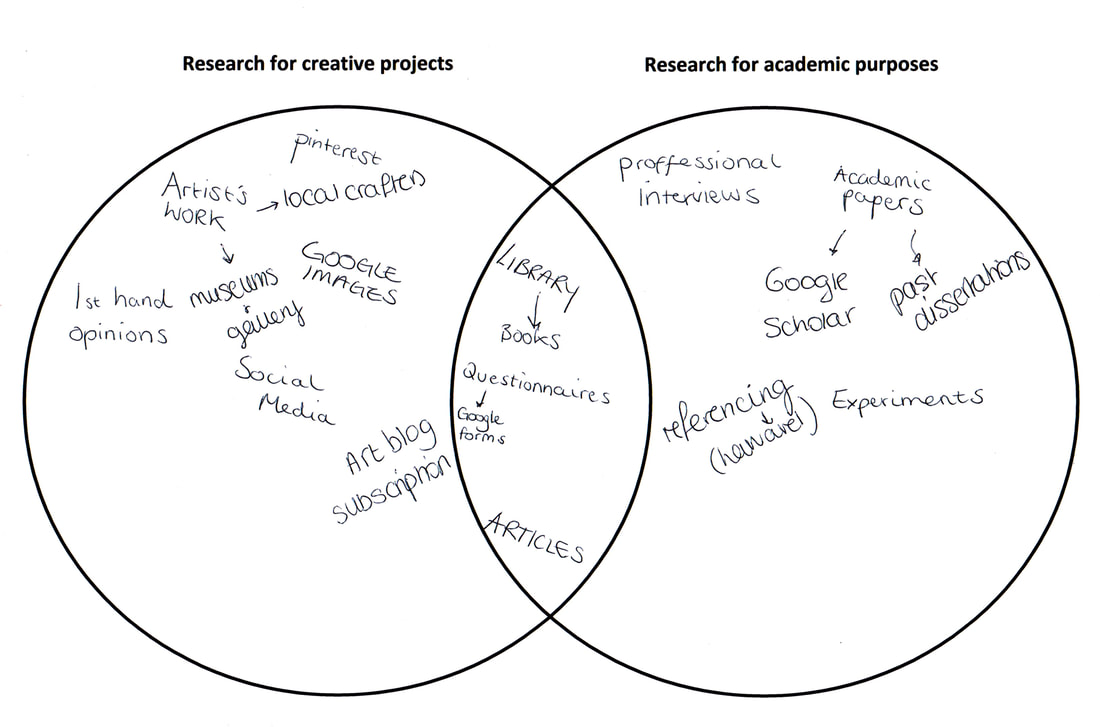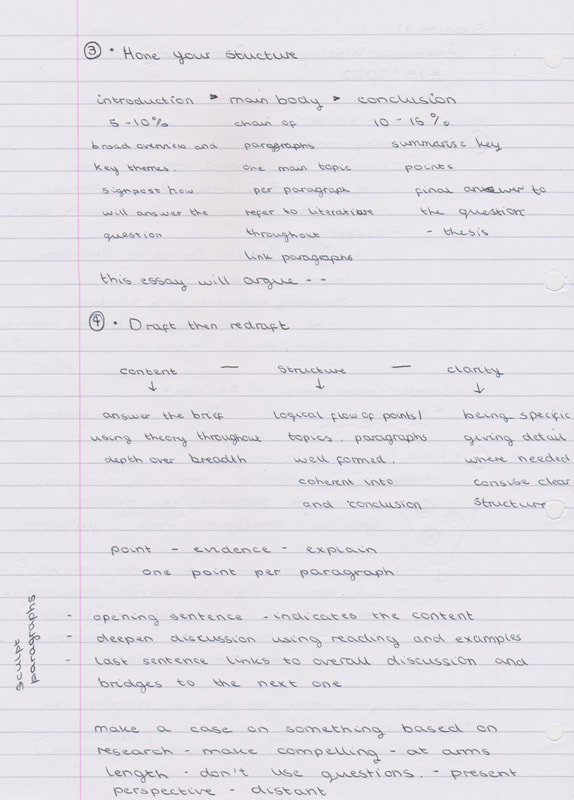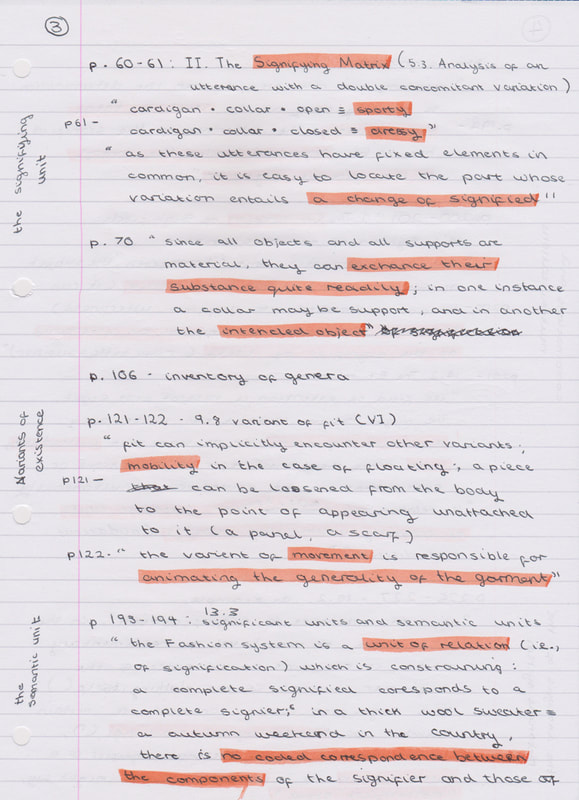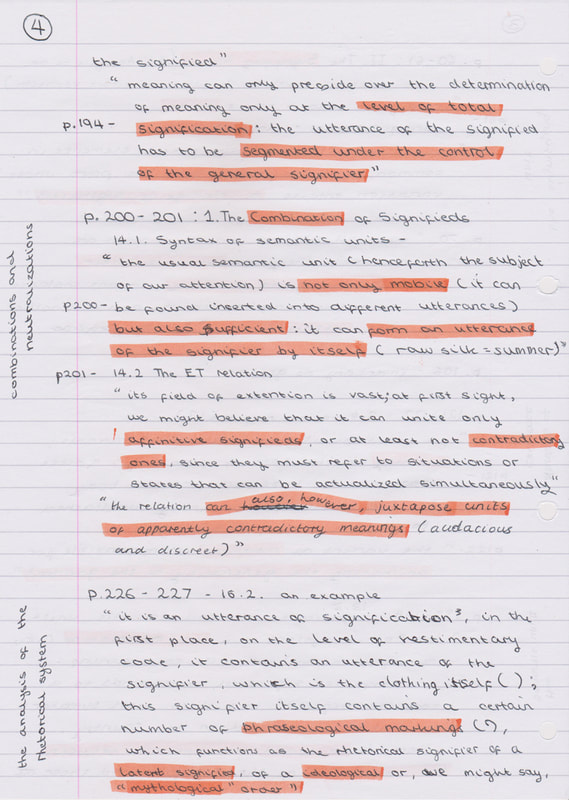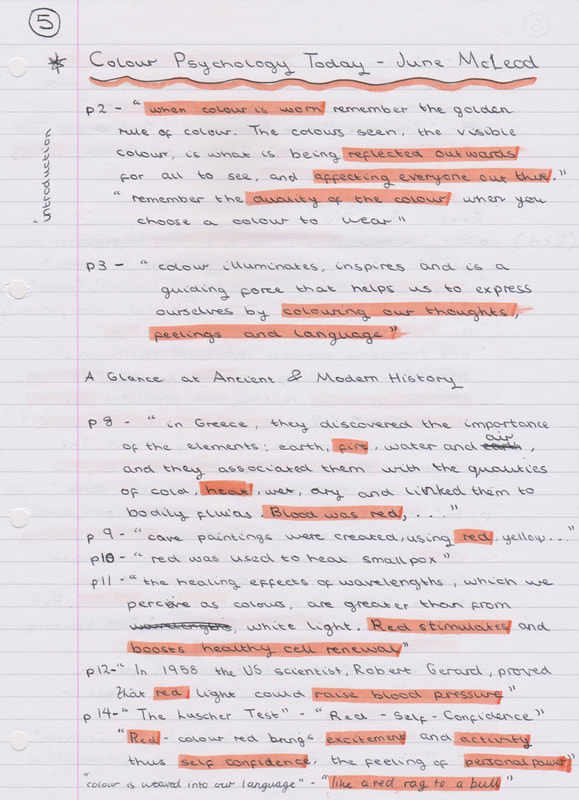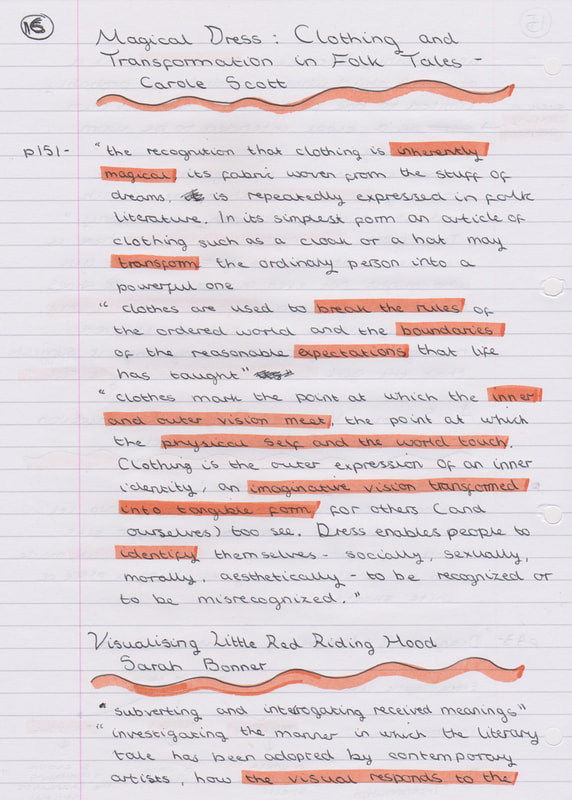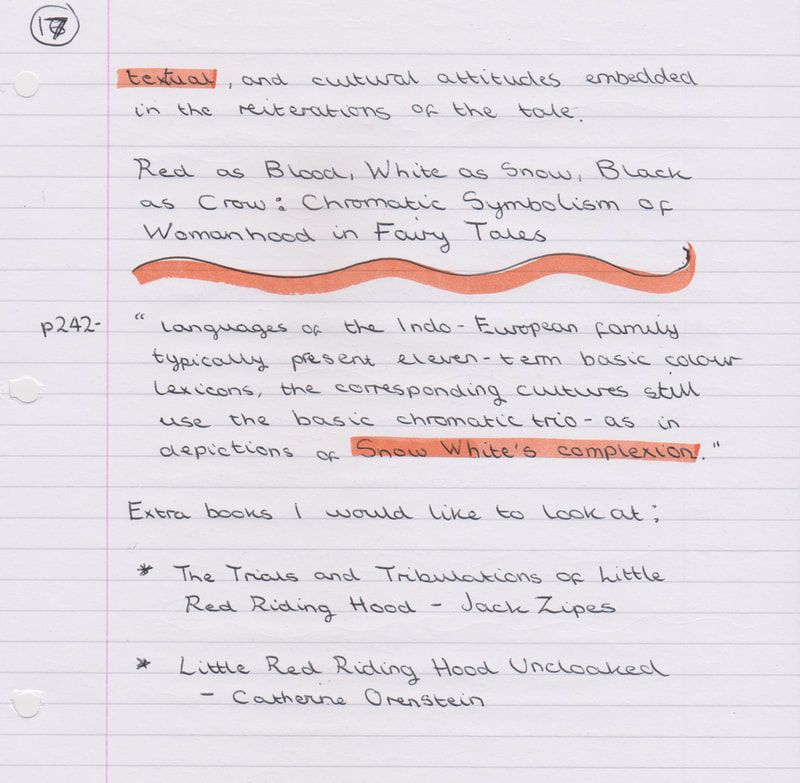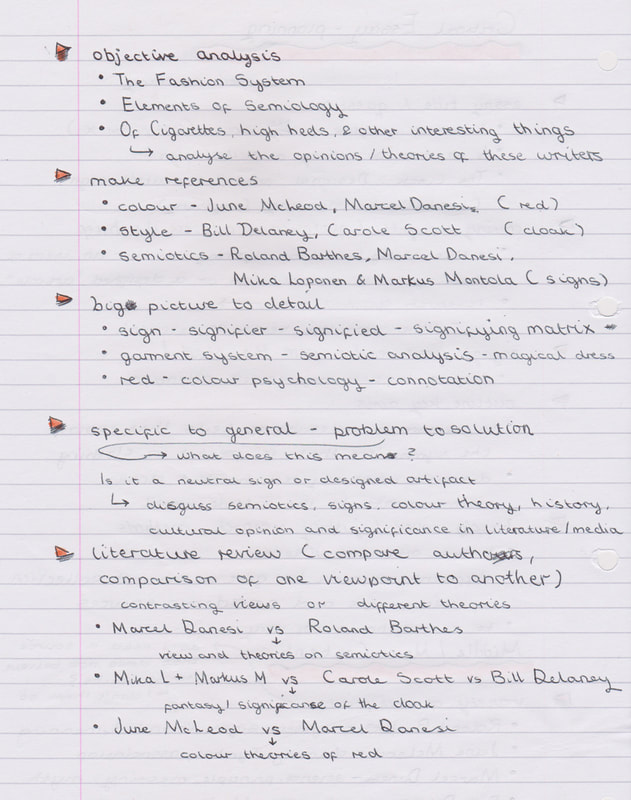- THE CRITICAL ILLUSTRATOR -
Lecture One: Semiotics
|
|
Blog Task and Notes:
Semiotics Terminology Language is made out of signs, each word whether written down or spoken can be concidered to be a sign. Words are symbolic signs, and signs are arbitrary meaning that the words bear no actual resemblance to the physical appearance or attributes of the subject the word refers to. Signs work because of their difference to other signs, each work is different and signifies a different thing. Each sign has two sides (dyad): Signifier + Signified = Sign A signifier is a physical representation, a stimulus of verbal or textural content. The signified is a mental concept, a response created by cognitive reading. Langue: whole language system Sign: single word Parole: partial example of speech or writing Syntagm: a complete, ordered sequence of signs, which means a sentence. Paradigm: point of substitution in a sentence, which allows for an exchange of a sign for a similar, metaphorical or abstract sign without changing the overall structure of the sentence. |
Lecture Two: Reading Words and Images
|
|
Blog Task and Notes:
Analysis of the Treachery of Images - "Ceci n'est pas une pipe" The text denotations of this images are as follows, the words translated from French mean "this is not a pipe". The writing is a lyrical font resembling handwriting. Whereas the text connotations of the statement signify to the viewer that what they are looking at is not in fact a pipe but something else entirely. The statement is written with surety indicated by the full stop at the end of the text. The key signifier in the text is "pipe" which brings up associations with our idea of the object. The handwriting style is expressive as indicated by the curls in the font, whilst the regimented size of each letter makes the font still appear professional. The signature in the bottom right corner shows Rene Magritte's ownership over the images and conveys authority. The images dentations are that of a realistically painted pipe rendered with oil paint onto a canvas. The style is of this piece is Surrealism. Whereas the image connotations are of a highly skilled painting representing a pipe, the lighting shows a level of realism within the painting. The dark rich colours of the pipe make it appear more masculine and the gold band of the pipe makes the pipe appear expensive. This in turn makes the images come across as a sign of authority and status. The context or frame of reference of this piece of art is that it was painted in 1929 by Rene Magritte when she was 30 years old, the meaning and effect that this image has had on people is constantly evolving with our changing society and also our own individual views of the world. |
Lecture Three: Decoding Advertising
|
|
Blog Task and Notes:
Semiotic Analysis Panzini Advertisement: Non Coded (Linguistic) -
Loki Advertisement - Non Coded (Linguistic) -
|
Lecture Four: The Graphic Code of Comic Books
|
|
Blog Task and Notes:
1: Moment to Moment -
|
|
Bernie Krigstein (22nd of March 1919 - 8th of January 1990) was an illustrator from America. He was acclaimed for his interesting and innovative approach to creating comics. He is most notably remembered for his part in the EC Comics during the 1950s. He initially trained as a classical painter, and his most famous work was on the short story "Master Race".
From analysing this page from "Master Race" I can see that there are action to action, moment to moment, aspect to aspect and subject to subject transitions within this page. This combination of transitions makes for a visually interesting and dynamic page.
|
Lecture Five: Subculture and Style
|
|
Blog Task and Notes:
Subculture A subculture refers to a group of people, who are part of a group that is considered to be different from the ordinary or general population or mainstream culture. "A subdivision of a national culture, composed of a combination of factorable social situations such as class status, ethnic background, regional and rural or urban residence, and religious affiliation, but forming in their combination a functional unity which has an integrated impact on the participating individual. (Gordon, 1947: 40)" Jenks, Chris. Subculture : The Fragmentation of the Social, SAGE Publications, 2004. ProQuest Ebook Central, http://ebookcentral.proquest.com/lib/cumbria/detail.action?docID=254660. "Subcultures have enlivened life and research in the twentieth century and they continue to do so in the twenty-first. While the critical edge and resistant nature of subcultures may have diminished after the 1970s, in our current times of economic and political upheaval, youth unemployment, and budget cuts, the urgency of subcultural practices seems to have returned. However, as this book argues, subcultures have never gone away; they may have changed form, and we may need to adapt our conceptual tools or consider other practices, countries, or social groups, but fundamentally, similar processes of cultural expression have continued to exist." The Borders of Subculture : Resistance and the Mainstream, edited by Alexander Dhoest, et al., Taylor & Francis Group, 2015. ProQuest Ebook Central, http://ebookcentral.proquest.com/lib/cumbria/detail.action?docID=3569294. |
Tolkienist
Lecture Six: Gender and Identity
|
|
Blog Task and Notes:
Visual Pleasure and Narrative Cinema - Laura Mulvey "Mulvey, Laura. “Visual Pleasure and Narrative Cinema.” Film Theory and Criticism : Introductory Readings. Eds. Leo Braudy and Marshall Cohen. New York: Oxford UP, 1999: 833-44." To summarise this essay written by Laura Mulvey discusses the topics of pre-existing patterns of the sexual difference between men and women, and how these social formations are reflected in the film industry. This is a political weapon that has a large unconscious effect and reinforced the pre-existing patriarchal society. This essay also focuses on phallocentrism, which apparently dates back the theories of Freud, who believed that woman represent castration. Additionally children are mentioned in relation to these topics. Cinema has a hidden unconscious order, based in the monolith system of Hollywood in the 30s, 40s and 50s. The production of cinema is either based in artisanal or capitalist ideals, but both have a dominant concept of women. The most common are the assumptions of mainstream film that reflect political and aesthetic ideals in Cinema. There are coded erotic messages interwoven into mainstream film, this is linked to erotic pleasure. This links to peoples beliefs that the central place of a women is based in ego and this cannot exist in the abstract. People are viewed as objects, linking to narcissistic and voyeuristic viewers that watch and objectify those on the Cinema screen seeing the people as almost not real. Cinema is made as a spectator activity that feeds into illusion and attention on the human form as entertainment. This habit of viewing is supposed to date back to when children first recognise their reflections as the point at which the constitution of the ego begins. Cinema is simultaneously the loss and reinforcement of ego. I found this text hard to read in parts, a lot of the views are in my opinion very outdated however they do help to explain how our society is now extremely affected by the patriarchy. The part I found most interesting was the beginning of the ego as discussed originally by "Jacques Lacan". I also found the mentioning of Hitchcock and Stemberg in relation to voyeurism to be interesting as this is a real life example of what this essay was discussing, |
Lecture Seven: Global Culture and Ethical Design
Lecture Eight: Post Modernism and Visual Culture
|
|
Blog Task and Notes:
Key Terms
|
Lecture Nine: The Critical Designer
Lecture Ten: The Research Journey
Lecture Eleven: Academic Presentation and Harvard Referencing
Lecture Twelve: Conclusion and Dissertation Introduction
Essay Planning - Semiotics of Fashion


